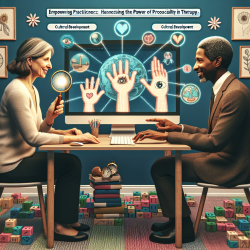As a practitioner dedicated to creating great outcomes for children, it's crucial to base our decisions on solid evidence. Recent research titled Learning a Sign Language Does Not Hinder Acquisition of a Spoken Language offers compelling insights that can enhance our practice. This study by Pontecorvo et al. (2023) reveals that learning American Sign Language (ASL) not only does not impede spoken language acquisition but may actually support it.
The study included 56 deaf and hard of hearing (DHH) children aged 8 to 60 months who were learning both ASL and spoken English. Contrary to common concerns, the results showed a positive correlation between ASL vocabulary size and spoken English vocabulary size. This means that children with larger ASL vocabularies were more likely to have spoken English vocabularies in the average range for hearing monolingual children.
Here are some key takeaways from the research:
- Positive Correlation: ASL vocabulary size positively correlates with spoken English vocabulary size.
- Total Vocabulary: Bilingual DHH children had total vocabularies (ASL and English combined) equivalent to same-age hearing monolingual children.
- Age-Expected Skills: Children with large ASL vocabularies were more likely to have spoken English vocabularies in the average range.
These findings challenge the notion that sign language exposure hinders spoken language development. Instead, they suggest that early ASL exposure can facilitate spoken language acquisition, providing a broader language base for DHH children.
As practitioners, we can leverage these insights to advocate for early ASL exposure for DHH children. Here are some actionable steps:
- Encourage Bilingualism: Promote the use of both ASL and spoken language in early intervention programs.
- Educate Families: Inform parents about the benefits of ASL for their child's overall language development.
- Integrate ASL in Therapy: Incorporate ASL into your therapy sessions to support holistic language development.
In conclusion, this research provides robust evidence that learning a sign language like ASL can enhance spoken language acquisition in DHH children. By embracing bilingualism, we can help these children achieve their full potential in both languages.
To read the original research paper, please follow this link: Learning a Sign Language Does Not Hinder Acquisition of a Spoken Language.










